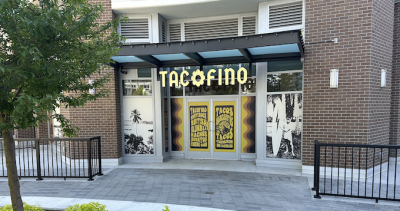Blues salutes historic black community
Soon after Savannah Walling moved to Vancouver from Oklahoma in the early '70s, she dined at Vie's Chicken and Steak House. The Southern-style cooking and cheery hospitality of the little place on Strathcona's Union Street felt familiar, reminding Walling of African-American eateries she'd known back home. It was one of the last vestiges of what, for six decades, had been a thriving black community in the East Side neighbourhood.
Thirty years later, Walling, the artistic director of Vancouver Moving Theatre, rekindled memories of Vie's in the course of her research for East End Blues… And All That Jazz. Subtitled A Celebration of the Downtown Eastside's Historic Black Community, the hourlong show combines live music and storytelling and is a highlight of this year's Heart of the City Festival, which runs from Wednesday (October 25) through November 5.
“The roots of the piece lie in the creation of the DES [Downtown Eastside] Community Play in 2003,” says Walling, reached at her Strathcona home. “Fairly late in that process I was put in touch with people who'd been an important part of the black community around here or were close to it, and I did a series of interviews with them. But we weren't able to incorporate much of that material into the play and felt it really needed recognition of its own.”
Coauthored by Walling and actor Denis Simpson, East End Blues evokes the life and times of the lost community, which played an influential role in Vancouver's arts and entertainment scene. Singers Candus Churchill and Tom Pickett perform popular African-American songs from the period of 1920 to 1970, accompanied by pianist Bill Costin and bassist Tim Stacey. Between the songs, one of the leading artistic figures of the black community, veteran hoofer Len Gibson, delivers lively monologues that touch on its history, personalities, and key places.
“Len was a very precocious, self-taught dancer,” Walling says. “His mother, Leona Risby, ran a nightspot on Alexander Street called the Country Club, and he began tap-dancing on local stages at the age of five. In his late teens he took up ballet. Len did choreography for a lot of the local nightclubs in this area, as well as for Bamboula, a short-lived CBC series in 1954 that was the first live-music series created in Vancouver and one of the first TV shows with a multiracial cast. He's a mine of information and anecdotes, and helped out with the script.”
Walling and Simpson selected the songs in East End Blues—which plays next Friday and Saturday (October 27 and 28) at radha yoga & eatery (728 Main Street)—for their thematic and emotional resonance with the narrative. “Tea for Two”, for instance, is a number that Gibson tap-danced to as a kid. “Five Guys Named Mo” served as a signature tune for trombonist Ernie King, who ran the Harlem Nocturne at Hastings and Gore streets, a popular nightclub in the late '50s and the '60s. And the gospel piece “Standing in the Need of Prayer” was sung at the African Methodist Episcopal Fountain Chapel on Jackson Avenue, the principal place of worship for the black community—with a link to rock 'n' roll history.
Among the people who helped found the chapel was Nora Hendrix, Jimi Hendrix's grandmother, who arrived in Vancouver around 1911. Jimi was also a part of the community, on a temporary basis at least. “He came some summers to stay with Nora and his aunt, and at one point attended school here,” Walling says. “After he was discharged from the U.S. army in the early '60s, he performed for a while at the Smilin' Buddha Cabaret, another of the nightspots in the neighbourhood. The story we've heard is that he got fired for playing too loud.”
The Fountain Chapel lay at the east end of Hogan's Alley, a lane by Prior and Union streets that was the heart of the black community. It provided access to a bustling world of small cafés and eateries, nightclubs, music joints, bootlegging shacks, and gambling parlours. Inevitably, Hogan's Alley and its denizens fell afoul of the moralistic authorities of the day. Toward the end of East End Blues, Gibson relates how they declared the lane and the area around it an urban blight.
“A lot of the buildings were condemned,” says Walling. “As houses deteriorated and were torn down, black residents dispersed to other parts of Greater Vancouver. The building of the Georgia Viaduct in 1972 destroyed the two most active blocks of black-owned businesses and homes that were left of Hogan's Alley.”
With the Downtown Eastside again threatened by pressure for development, Walling feels strongly that East End Blues carries a message for the neighbourhood today. “We're creating a piece of art, but within the story are certain patterns that keep recurring for people here as they struggle to hold on to their community. We hope the show brings them to reflect on where we are now, where we've come from, and what we might become.”
Think Vancouver: Living Together is a joint presentation of the Georgia Straight and CBC Radio and Television. For archived stories, visit www.cbc.ca/thinkvancouver/.















Comments